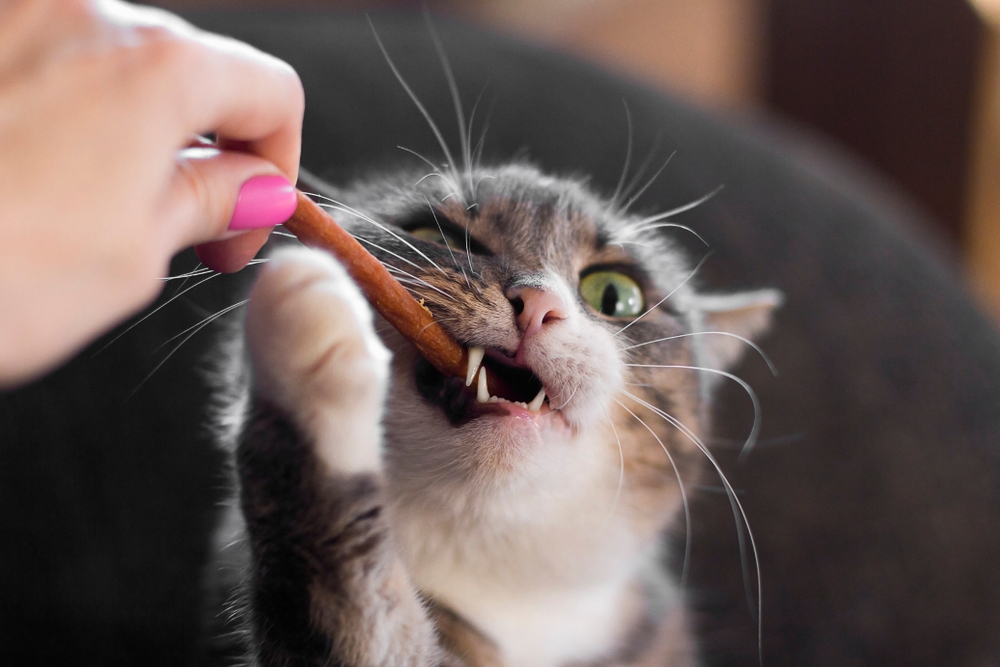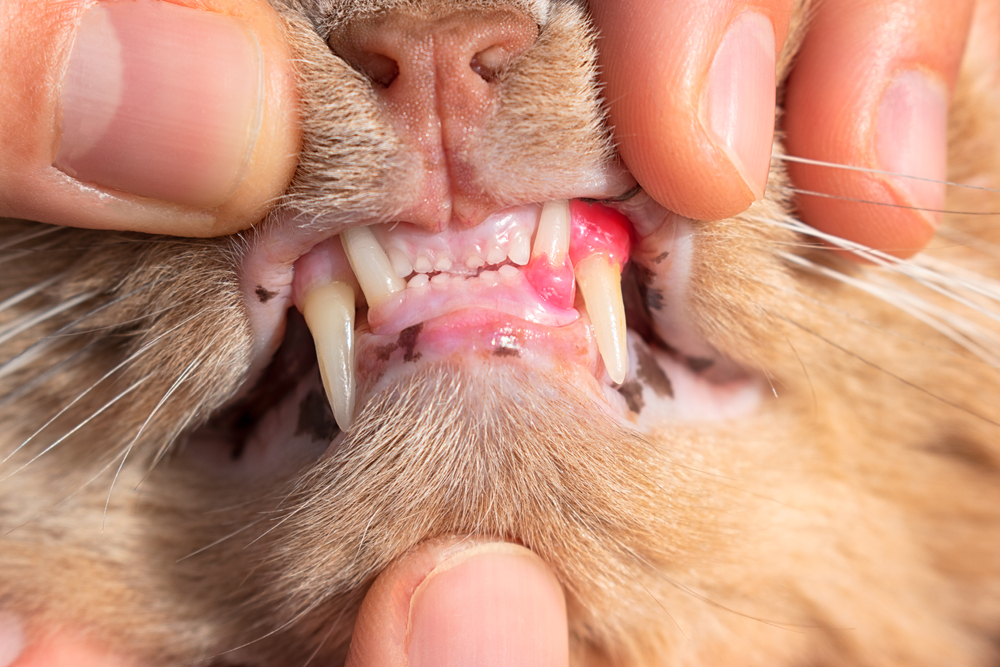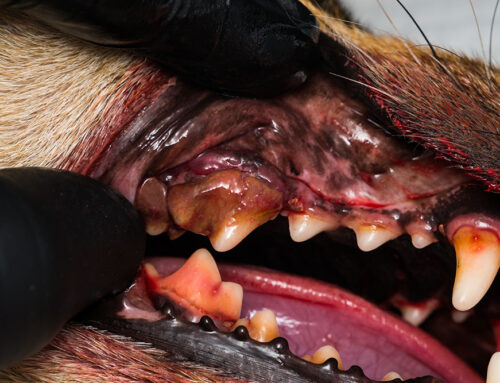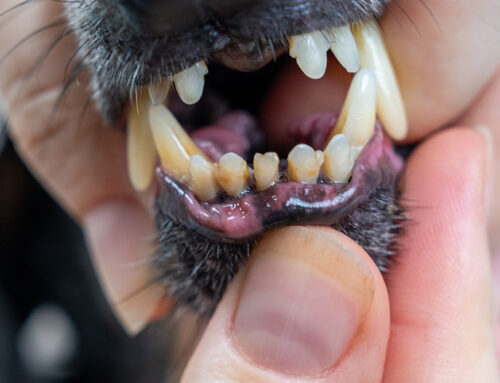Feline resorptive lesions, also known as FRLs or tooth resorption, affect 20% to 60% of cats. If your veterinarian has referred your cat to North Bay Veterinary Dentistry for feline resorptive lesion treatment, here’s what you need to know about this painful condition and what it means for your cat’s long-term health.
Resorptive lesions occur when the cat’s tooth is eaten away by cells normally in charge of bony remodeling in the jaw
Similar to human dental anatomy, every feline tooth contains an inner chamber or canal that is innervated by blood vessels and nerves. This chamber is encased in dentin, which is a mineralized but porous material that makes up the tooth’s overall structure and strength, and the crown of the tooth is covered by the protective enamel. During tooth resorption, the body attacks and absorbs the dentin and enamel with cells that are normally responsible for remodeling. This process spreads throughout the affected tooth, ultimately resulting in erosion of the structure of the roots and/or the crown.
Resorptive lesions are not the same as cavities in cats
In many ways, feline tooth resorption seems similar to cavities, but experts have determined that the two conditions are distinctly different. The primary difference is their origin—while cavities (i.e., caries) are known to be caused by plaque bacteria that cause acid erosion of the enamel and dentin, the primary cause of resorptive lesions is the activation of normal cells that eat away old bone to start attacking the tooth. The reason this occurs is still hotly debated, but does not appear to be bacterial in nature.
Although their cause remains unknown, several risk factors that can increase a cat’s likelihood for resorptive lesions are recognized. These include:
- Pre-existing periodontal disease or other inflammation in the mouth
- Previous resorptive lesions
- Age — Although cats as young as 2 years can experience resorptive lesions, cats who are 5 years or older have a heightened risk.
Resorptive lesions are painful and affected cats may refuse hard food
Cats are experts at hiding pain and weakness, but as resorption occurs and the tooth’s dentin and nerve are exposed, they often cannot conceal their discomfort. This mostly affects eating habits, as an affected cat often becomes picky and will avoid eating hard food. Cats may also drop or swallow food whole. Additional signs include drooling, additional chewing noise or movement (i.e., chattering), or food aversion. If part of the crown of a tooth with resorption breaks off, you may also see sudden severe pain and even the inability to fully close the mouth.
However, some cats may show no clinical signs despite their intense pain, which makes regular oral care—including dental cleanings and X-rays under anesthesia—the best way to identify and address resorptive lesions.
Resorptive lesions are often found during feline dental cleanings
Resorptive lesions were once referred to as cervical or neck lesions, because they often appear along the neck of the tooth near the gumline, where they also trigger gingivitis (i.e., gum inflammation). Your veterinarian may be able to identify these lesions visually or by palpation if your cat is tolerant.
However, because resorptive lesions are often hidden beneath tartar or gum overgrowth (i.e., gingival hyperplasia), they are impossible to identify until the cat is under anesthesia. The lesions are often found along the premolars and molars (i.e., the large chewing teeth), but can also affect any tooth, including the more prominent canine teeth.
Resorptive lesion treatment in cats depends on location
Resorptive lesion diagnosis can only occur under anesthesia, when a detailed oral examination and digital imaging (i.e., dental X-rays or cone beam computed tomography) can be performed. These images allow your regular veterinarian or the North Bay Veterinary Dentistry team to visualize the tooth’s internal and surrounding structures, above and below the gumline. A fine detailed examination using a sharp explorer can be used to feel for lesions that may not yet be visible on imaging. Resorptive lesions are then graded from stage 1 to 5, based on the amount of lost hard tissue.
Depending on the stage and location of the resorption, treatment can range from conservative (i.e., monitoring and repeating X-rays at regular intervals) to extensive (i.e., tooth extraction). Because the condition typically is progressive, extraction is often the only way to eliminate future pain and complications.
In teeth that have severe resorption of the roots, where the root is almost turned back into normal bone, a less invasive option for treatment is surgical subgingival crown amputation. In this procedure, any remaining portion of the crown of the tooth is removed, and the gum tissue is closed over the resorbing roots. This is both a quicker surgery and requires less removal of bone, which results in a quicker recovery. The choice of whether a tooth can have a crown amputation or must be fully extracted depends on imaging findings, as well as your cat’s overall health picture.
Because teeth with resorptive lesions are often weakened or broken, extractions can be complex and delicate. When full extraction is required, the veterinary team must ensure that every tooth portion is cleanly removed to prevent future complications. Post-extraction X-rays are used to confirm successful extraction prior to suturing the gum tissue.
Resorptive lesions may increase your cat’s risk for future lesions
Despite treatment, future resorptive lesions may occur, but if, when, or where is impossible to predict. Therefore, we recommend annual veterinary oral exams, dental cleanings, and X-rays under anesthesia, so we can treat or manage each resorptive lesion as it appears. This is the best way to minimize oral discomfort and preserve your cat’s dentition for as long as possible.
Resorptive lesion prevention for cats: Is that possible?

Sadly, because tooth resorption in cats is poorly understood, no clear strategies exist that can prevent their formation. However, cat owners can take proactive oral health measures that will safeguard their cat’s dental wellness. These steps include:
- Annual visual exam — Your veterinarian should visually assess your cat’s teeth and gums yearly. Fearful or less-cooperative cats should be sedated.
- Daily dental care — Feeding your cat a dental diet or brushing their teeth at least every other day can reduce harmful oral bacteria and prevent or slow periodontal disease.
- Regular dental cleanings and X-rays under anesthesia — Early intervention and care may allow less invasive treatment.
Feline resorptive lesions can be frustrating for cat owners, and their cats. If your cat needs advanced veterinary dentistry, or for more information about our services, contact North Bay Veterinary Dentistry.






Leave A Comment